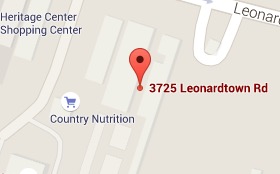Tax Newsletter
Restaurant Owners Must Withhold Payroll Taxes on Employee Tips
A tip or “gratuity” for tax purposes is defined as a non-compulsory, additional payment for services, usually to a waiter or waitress; the customer is free to set the amount. In contrast, a “service fee” is added to the bill by the management.
Tips are taxable income to the recipient; subject to income tax, withholding, and Federal Insurance Contribution Act (FICA) taxes, e.g., Social Security and Medicare. In the 1990’s, the Internal Revenue Service (IRS) estimated that as much as 84% of tips, totaling an estimated $500 million annually, were not being reported and taxes on the unreported amount were not paid.
Tips Reported by Employees and Withholding Requirements
Employees who receive tips are required to:
- Keep a daily tip record.
- Accurately report all cash and credit card tips received to their employer in any month where the tips are more than $20.
- Report all tips received on their income tax returns.
Records should be kept of cash and credit card tips, tips shared with other employees (“tip-splitting,” etc.), and the value of non-cash tips received, such as tickets or other items of value. The employers must withhold income taxes and pay FICA taxes from the employees’ wages to cover tip income from cash and credit cards; there is no withholding for non-cash tips.
If there is insufficient income to satisfy the amounts to be withheld, the employer must apply money first to taxes on the regular pay, then to FICA taxes on the tips, and only then to withholding for federal and state taxes. The employer must inform the employee on a form what, if any, FICA taxes on tip income remain unpaid, and these must be paid with regular income taxes, or money can be given by the employee to the employer to satisfy the FICA taxes.
Income taxes must be paid on all tips, whether received in cash, by credit card, or non-cash tips, whether they were reported to the employer or not. If tips are not reported to the employer as required, the employee may be subject to a penalty of one-half of the FICA taxes owed on the unreported tips. This penalty may be avoided if the employee can show reasonable cause for not reporting the tips to the employer.
Employer Reporting
Subject to exceptions, an employer operating a “large food or beverage” establishment, must file an “Employer’s Annual Information Return of Tip Income and Allocated Tips” by March of the following year. Such establishments include where:
- Food or beverage is provided for consumption on the premises;
- Tipping is a customary practice; and
- More than 10 employees (excluding more than 50% owners of the company’s stock), worked more than 80 hours and were normally employed on a typical business day during the preceding calendar year.
This form must include information on tips charged, service charges, tips reported by employees directly or indirectly, gross receipts, and any “allocation of tips” (i.e., tips assigned to the employee in addition to tips reported by the employee to the employer) during the previous year.
U.S. v. Fior D’Italia Case
In a 2002 landmark U.S. Supreme Court case, U.S. v. Fior D’Italia, Inc., the IRS discovered that tip income reported by the restaurant for a couple of years was far less than the amount of tips recorded on credit card slips for those years. The IRS conducted a “compliance” check and used an “aggregate estimation” method to estimate the actual tips likely received in those years by the restaurant’s employees. The IRS methodology included:
- Examining credit card slips;
- Finding the average percentage tip paid by the customers using credit cards for payment;
- Assuming that cash-paying customers tipped at the same rate;
- Estimating total tips by multiplying the tip rate by the restaurant’s total receipts;
- Subtracting the tips already reported; and
- Applying the FICA tax rate to the remainder.
The IRS assessed a substantial amount for past due FICA taxes. The restaurant argued that the IRS had to first determine the tips of each employee and use that information to calculate FICA liability. The Supreme Court held that the IRS was entitled by tax law to use the aggregate estimation method.
Allocation of Tips
The IRS now requires large food establishments to estimate what the tip income for the restaurant should be for the year by multiplying gross income by 8%, a percentage deemed a fair weighted average of tipping percentages. Employers and/or employees can apply to the IRS for a lesser percentage, but in no event will the percentage be reduced to less than 2%. If the tip income reported by the employees is less than the estimated amount, the employer must allocate the excess amount among the employees.
Employees must then also report their allocated tips on their income tax (and pay income and FICA taxes on the amount) unless:
- The taxpayer/employee kept a daily tip record or other equally credible evidence; or
- The tip record is incomplete, but shows that the taxpayer’s actual tips were more than the amount reported to the employer plus the allocated tips.
In such cases, the taxpayers may report actual tips on their returns.
© 2024 NextClient.com, Inc. All rights reserved.



